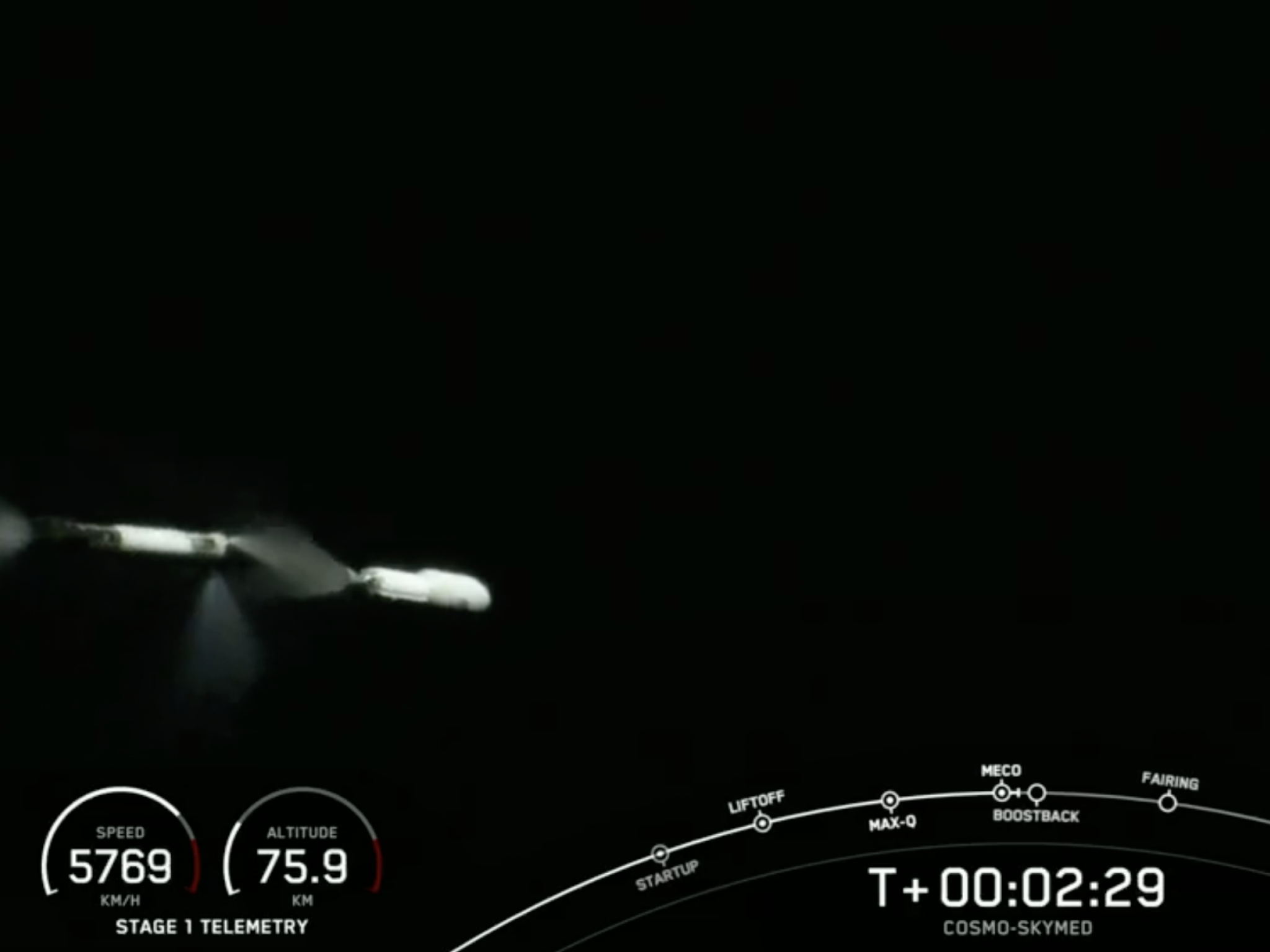
Tesla Inc (NASDAQ:TSLA) CEO Elon Musk on Monday explained how SpaceX's two-staged Falcon 9 rocket performed a backflip during its latest launch for an Italian Earth observation satellite.
What Happened: SpaceX launched the reusable Falcon 9 COSMO-SkyMed Second Generation FM2 mission to low Earth orbit from Cape Canaveral Space Force Station in Florida at 6:11 p.m. ET following a four-days delay due to bad weather.
The Musk-owned SpaceX tweeted the details of the launch along with a live webcast. The privately-held company also shared a short clip of the Falcon 9’s stage separation from ground cameras.
Musk noted the sequence of separation in the 16-seconds clip. The billionaire entrepreneur said the 16-story tall rocket performed a deft manoeuvre while moving at a very high speed.
16 story tall rocket, traveling several times faster than a bullet, backflips & fires engines to return to launch site
— Elon Musk (@elonmusk) January 31, 2022
This included the booster performing a backflip after separating from the satellite. The booster then fired up the engine to return to the landing zone just minutes after the liftoff.
See Also: A Rocket Of Elon Musk's SpaceX Is On Course To Collide With The Moon In 2 Months
COSMO-SkyMed Second Generation's satellite will monitor the Earth for emergency prevention, strategy, scientific and commercial purposes. It will send back data on a global scale to support risk management, cartography, forest and environment protection, natural resources exploration, land management, defense and security, maritime surveillance, food and agriculture management.
Why It Matters: This was SpaceX’s 104th booster landing during an orbital mission. The Musk-led company has designed the reusable rockets to cut down on costs and increase the volume of space-linked missions.
Musk dreams of colonizing Mars and founded SpaceX with the mission to make humanity multiplanetary and remains “highly confident” that SpaceX would land humans on Mars by 2026.
Musk had in July said SpaceX is developing a fully-reusable Starship that can deliver a payload of around 150 tonnes to low Earth Orbit and about 250 tonnes when expendable.
SpaceX aims for Starship to replace its existing rockets — Falcon 9, Falcon Heavy, and Dragon 2 — and be able to carry much more mass into orbit.
Photo: Courtesy of SpaceX via Twitter







